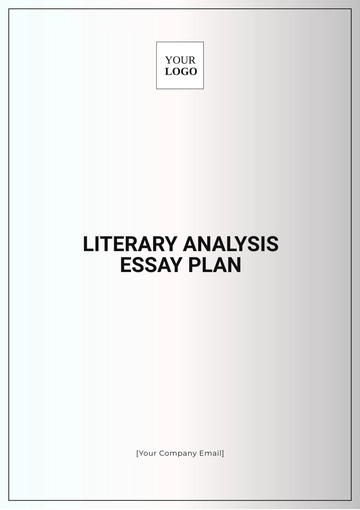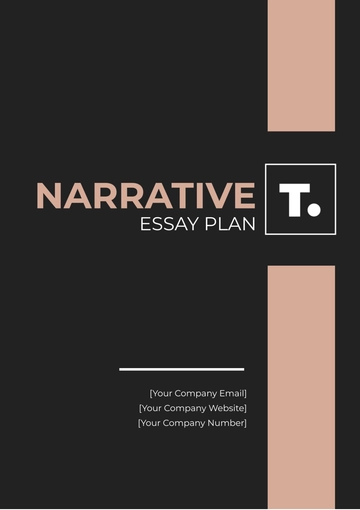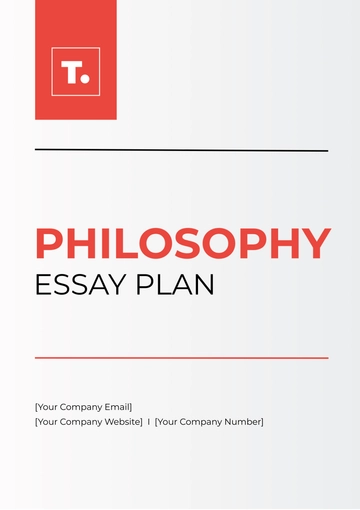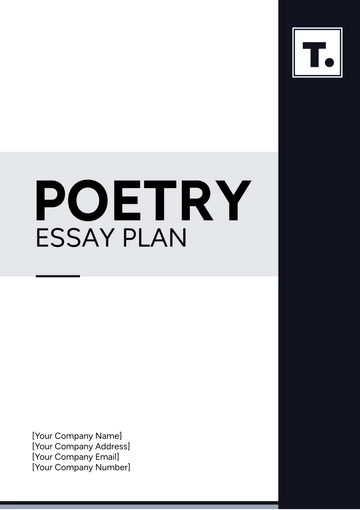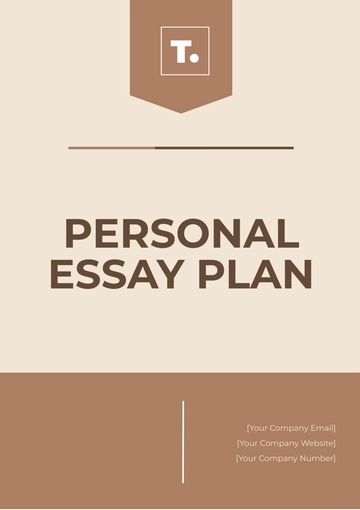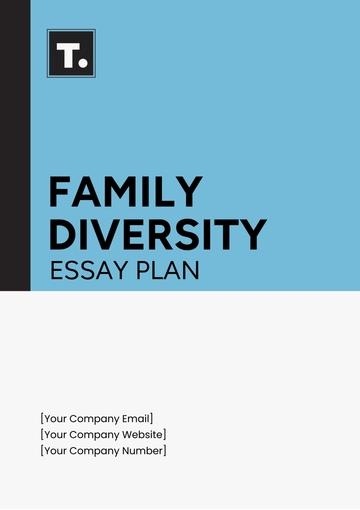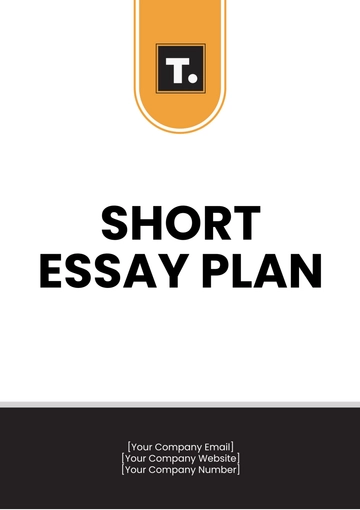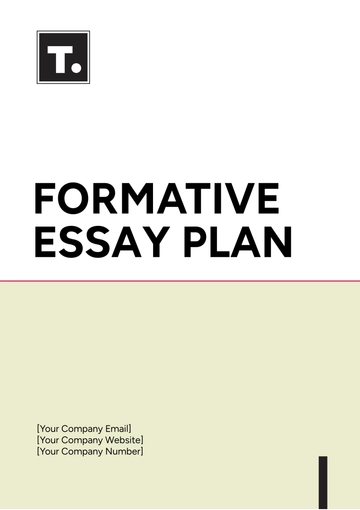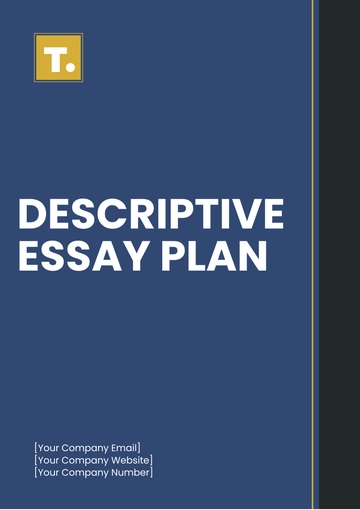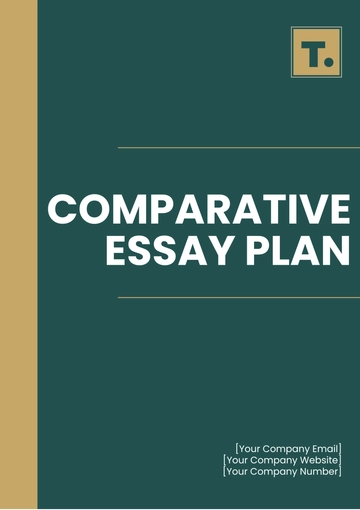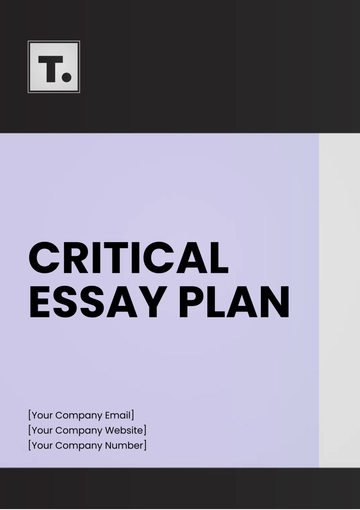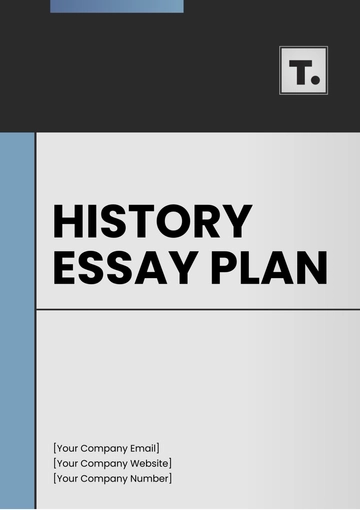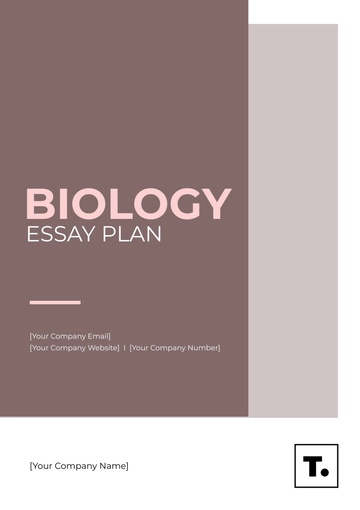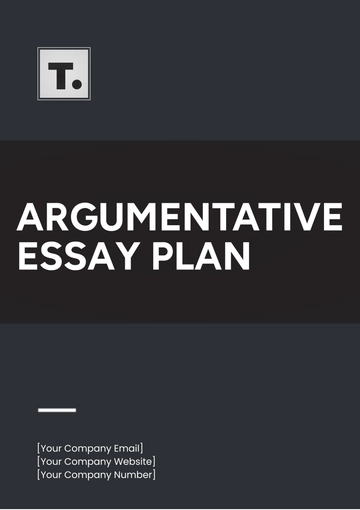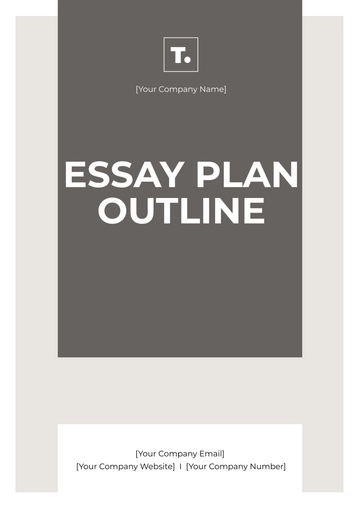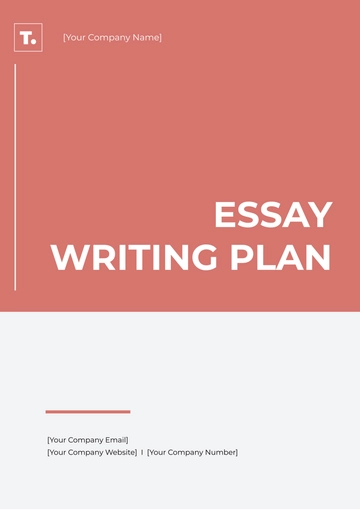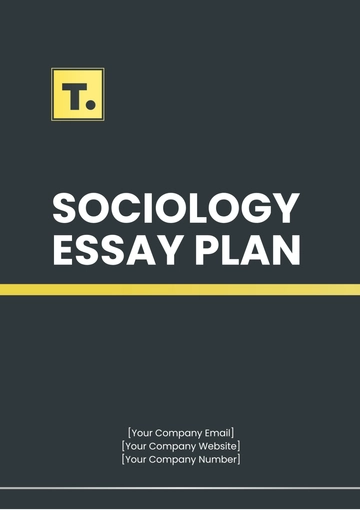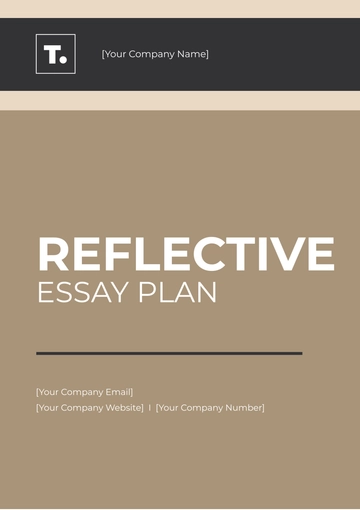Free Descriptive Essay Plan
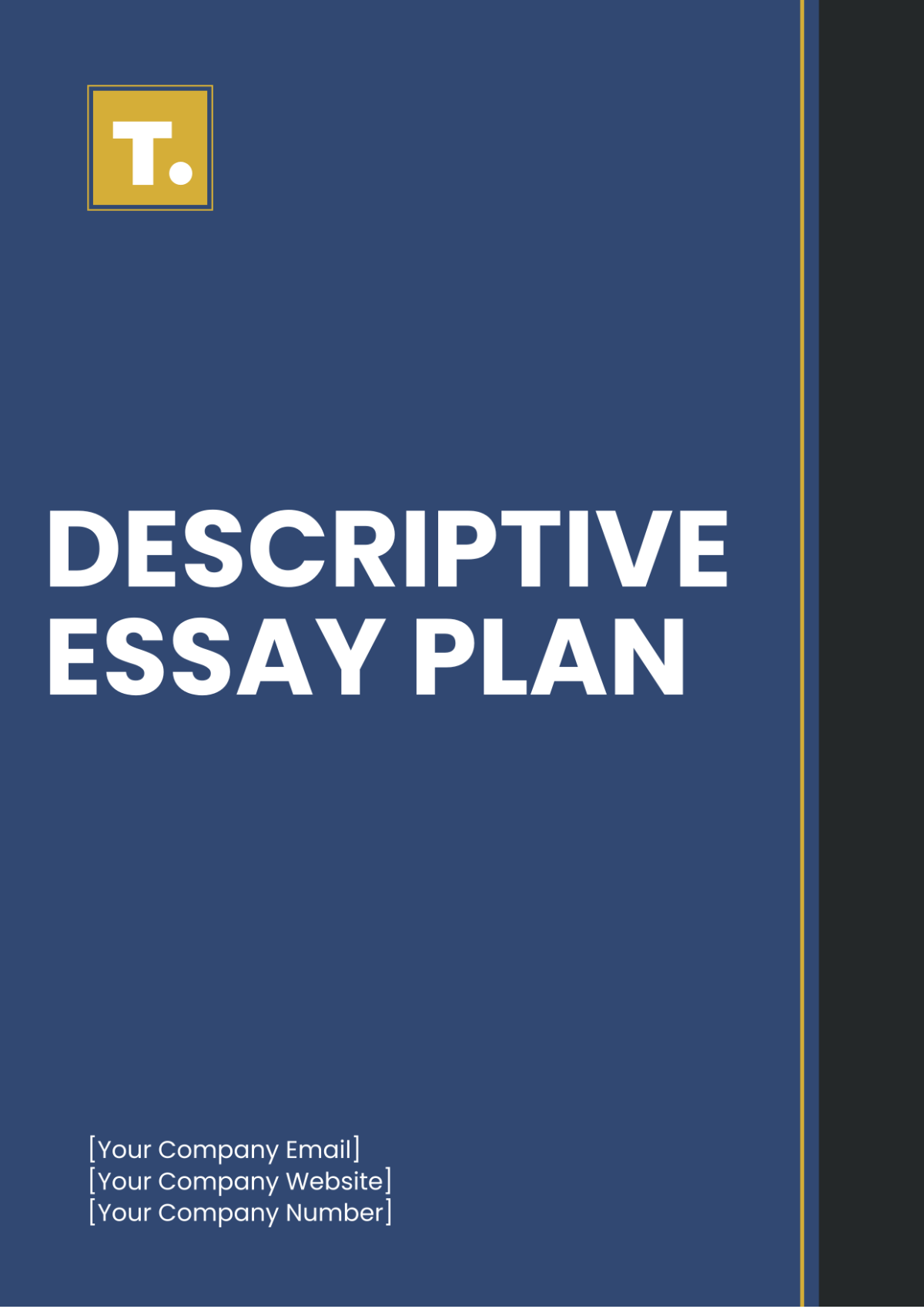
I. Introduction:
Purpose:
This document provides a structured framework for composing captivating and vivid descriptions, guiding writers to create compelling imagery that resonates with readers.
STUDENT'S NAME: [YOUR NAME]
INSTRUCTOR'S NAME: [INSTRUCTOR'S NAME]
COURSE TITLE: [COURSE TITLE]
DUE DATE: [DUE DATE]
ESSAY TOPIC: [ESSAY TOPIC]
WORD COUNT GOAL: [WORD COUNT GOAL]
II. Thesis Statement:
Main Argument: "[YOUR THESIS STATEMENT]" encapsulates the essence of the descriptive essay, articulating the central theme and guiding the direction of the descriptions to follow.
III. Setting the Scene
Aspect | Description |
|---|---|
Description | [Description of the setting], utilizing rich sensory details to immerse the reader in the environment. |
Sensory Details | Engage the reader's senses through vivid imagery, including sight, sound, smell, taste, and touch. |
Emotional Impact | Convey the emotional significance of the setting, evoking empathy or intrigue in the reader. |
IV. Character Portrayal
Aspect | Description |
|---|---|
Introduction | Introduce the main character or characters to be described, providing context for their significance. |
Physical Description | Detail the physical appearance and mannerisms of the characters, bringing them to life on the page. |
Personality Traits | Explore the personalities of the characters, delving into their motivations, quirks, and relationships. |
V. Evoking Emotions
Aspect | Description |
|---|---|
Emotional Appeal | Utilize descriptive language to evoke specific emotions in the reader, eliciting empathy or resonance with the characters. |
Symbolism | Identify symbolic elements within the descriptions, imbuing them with deeper meaning and thematic relevance. |
Connection to Theme | Discuss how the emotional content contributes to the overarching theme of the essay, reinforcing its significance. |
VI. Narrative Flow
Aspect | Description |
|---|---|
Transitions | Ensure smooth transitions between paragraphs, maintaining the flow of the narrative and guiding the reader through the essay. |
Chronological Order | Organize descriptions in a logical sequence, enhancing comprehension and coherence. |
Pacing | Control the pacing of the narrative to build tension, create moments of reflection, or highlight key events. |
VII. Conclusion
The descriptive journey embarked upon in this essay leads to a synthesis of emotions, imagery, and narrative intricacies. Through the meticulous crafting of settings, character portrayals, and emotional evocations, a tapestry of immersive descriptions has been woven. The reflective gaze upon these elements reveals not only their individual significance but also their collective impact in conveying the overarching theme. As the reader navigates through the vivid landscapes and encounters the diverse characters within the narrative, they are invited to explore the depths of human experience and emotion. In conclusion, this essay serves as a testament to the power of descriptive writing in capturing the essence of life and engaging the imagination of the reader.
- 100% Customizable, free editor
- Access 1 Million+ Templates, photo’s & graphics
- Download or share as a template
- Click and replace photos, graphics, text, backgrounds
- Resize, crop, AI write & more
- Access advanced editor
Craft your vivid descriptive essays effortlessly with the Descriptive Essay Plan Template from Template.net. This customizable and editable tool provides a structured framework for your ideas to flourish. Seamlessly tailor your essays to perfection with our AI Editor Tool. Elevate your writing experience today.
You may also like
- Finance Plan
- Construction Plan
- Sales Plan
- Development Plan
- Career Plan
- Budget Plan
- HR Plan
- Education Plan
- Transition Plan
- Work Plan
- Training Plan
- Communication Plan
- Operation Plan
- Health And Safety Plan
- Strategy Plan
- Professional Development Plan
- Advertising Plan
- Risk Management Plan
- Restaurant Plan
- School Plan
- Nursing Home Patient Care Plan
- Nursing Care Plan
- Plan Event
- Startup Plan
- Social Media Plan
- Staffing Plan
- Annual Plan
- Content Plan
- Payment Plan
- Implementation Plan
- Hotel Plan
- Workout Plan
- Accounting Plan
- Campaign Plan
- Essay Plan
- 30 60 90 Day Plan
- Research Plan
- Recruitment Plan
- 90 Day Plan
- Quarterly Plan
- Emergency Plan
- 5 Year Plan
- Gym Plan
- Personal Plan
- IT and Software Plan
- Treatment Plan
- Real Estate Plan
- Law Firm Plan
- Healthcare Plan
- Improvement Plan
- Media Plan
- 5 Year Business Plan
- Learning Plan
- Marketing Campaign Plan
- Travel Agency Plan
- Cleaning Services Plan
- Interior Design Plan
- Performance Plan
- PR Plan
- Birth Plan
- Life Plan
- SEO Plan
- Disaster Recovery Plan
- Continuity Plan
- Launch Plan
- Legal Plan
- Behavior Plan
- Performance Improvement Plan
- Salon Plan
- Security Plan
- Security Management Plan
- Employee Development Plan
- Quality Plan
- Service Improvement Plan
- Growth Plan
- Incident Response Plan
- Basketball Plan
- Emergency Action Plan
- Product Launch Plan
- Spa Plan
- Employee Training Plan
- Data Analysis Plan
- Employee Action Plan
- Territory Plan
- Audit Plan
- Classroom Plan
- Activity Plan
- Parenting Plan
- Care Plan
- Project Execution Plan
- Exercise Plan
- Internship Plan
- Software Development Plan
- Continuous Improvement Plan
- Leave Plan
- 90 Day Sales Plan
- Advertising Agency Plan
- Employee Transition Plan
- Smart Action Plan
- Workplace Safety Plan
- Behavior Change Plan
- Contingency Plan
- Continuity of Operations Plan
- Health Plan
- Quality Control Plan
- Self Plan
- Sports Development Plan
- Change Management Plan
- Ecommerce Plan
- Personal Financial Plan
- Process Improvement Plan
- 30-60-90 Day Sales Plan
- Crisis Management Plan
- Engagement Plan
- Execution Plan
- Pandemic Plan
- Quality Assurance Plan
- Service Continuity Plan
- Agile Project Plan
- Fundraising Plan
- Job Transition Plan
- Asset Maintenance Plan
- Maintenance Plan
- Software Test Plan
- Staff Training and Development Plan
- 3 Year Plan
- Brand Activation Plan
- Release Plan
- Resource Plan
- Risk Mitigation Plan
- Teacher Plan
- 30 60 90 Day Plan for New Manager
- Food Safety Plan
- Food Truck Plan
- Hiring Plan
- Quality Management Plan
- Wellness Plan
- Behavior Intervention Plan
- Bonus Plan
- Investment Plan
- Maternity Leave Plan
- Pandemic Response Plan
- Succession Planning
- Coaching Plan
- Configuration Management Plan
- Remote Work Plan
- Self Care Plan
- Teaching Plan
- 100-Day Plan
- HACCP Plan
- Student Plan
- Sustainability Plan
- 30 60 90 Day Plan for Interview
- Access Plan
- Site Specific Safety Plan

